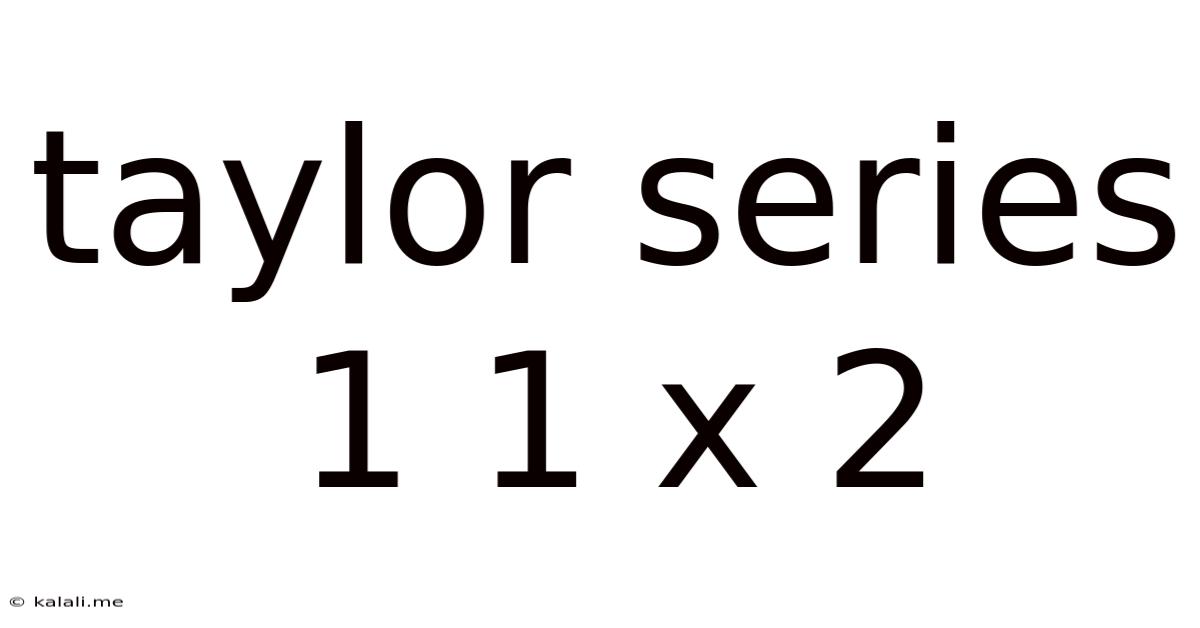Taylor Series 1 1 X 2
Kalali
May 23, 2025 · 3 min read

Table of Contents
Understanding the Taylor Series Expansion of 1/(1-x)²
The Taylor series is a powerful tool in calculus, allowing us to represent many functions as an infinite sum of terms. This article will delve into the Taylor series expansion of the function f(x) = 1/(1-x)², focusing on its derivation and applications. Understanding this expansion provides valuable insights into approximating functions and solving various mathematical problems.
What is a Taylor Series?
Before diving into the specifics of 1/(1-x)², let's briefly review the concept of a Taylor series. Essentially, a Taylor series represents a function as an infinite sum of terms, each involving a derivative of the function at a specific point (usually 0, resulting in a Maclaurin series) and a power of (x-a), where 'a' is the point of expansion. The formula for a Taylor series expansion around a point 'a' is:
f(x) = Σ [f⁽ⁿ⁾(a) / n!] * (x - a)ⁿ, where n ranges from 0 to ∞
Deriving the Taylor Series for 1/(1-x)²
We can derive the Taylor series for 1/(1-x)² using a couple of approaches. One efficient method leverages the known geometric series and its derivative.
-
Start with the Geometric Series: The geometric series formula is:
1/(1-x) = Σ xⁿ (for |x| < 1)
-
Differentiate: Differentiating both sides of the equation with respect to x, we obtain:
d/dx [1/(1-x)] = d/dx [Σ xⁿ]
-
Apply the Power Rule: This simplifies to:
1/(1-x)² = Σ nxⁿ⁻¹ (for |x| < 1)
This is the Taylor series expansion for 1/(1-x)². Note that the series converges only for |x| < 1. Outside this interval, the series diverges. This restriction is crucial when applying the series in practical calculations.
Applications of the Taylor Series for 1/(1-x)²
The Taylor series expansion for 1/(1-x)² finds applications in various mathematical fields, including:
-
Approximating Values: For values of x close to 0, the first few terms of the series provide a good approximation of 1/(1-x)². This is particularly useful when dealing with complex calculations where a direct evaluation might be difficult.
-
Solving Differential Equations: Taylor series can be used to find approximate solutions to differential equations, offering a powerful method for tackling otherwise intractable problems.
-
Probability and Statistics: This series appears in calculations involving probability distributions, particularly in moments and generating functions.
-
Physics and Engineering: Many physical phenomena can be modeled using functions that can be represented by Taylor series, simplifying analysis and simulations.
Understanding the Convergence
It's crucial to remember that the Taylor series only provides a valid representation of 1/(1-x)² within its radius of convergence, which is |x| < 1. Beyond this interval, the series diverges and doesn't accurately represent the function. This limitation needs careful consideration when employing the Taylor series for practical applications.
Conclusion
The Taylor series expansion of 1/(1-x)² is a valuable tool in various mathematical and scientific domains. Its derivation, based on the geometric series and differentiation, is straightforward. Understanding its convergence properties is essential for accurate applications. By mastering this expansion, you gain a powerful technique for approximating functions and solving a wide range of problems. Further exploration into more complex Taylor series expansions can significantly expand your mathematical toolkit.
Latest Posts
Latest Posts
-
Is Japanese Read Right To Left
May 24, 2025
-
How To Tell If Kitten Will Have Long Hair
May 24, 2025
-
How To Check Size Of Directory Linux
May 24, 2025
-
How To Generate Alphabetic Numbering In Latex
May 24, 2025
-
Equation Of A Plane Through 3 Points
May 24, 2025
Related Post
Thank you for visiting our website which covers about Taylor Series 1 1 X 2 . We hope the information provided has been useful to you. Feel free to contact us if you have any questions or need further assistance. See you next time and don't miss to bookmark.